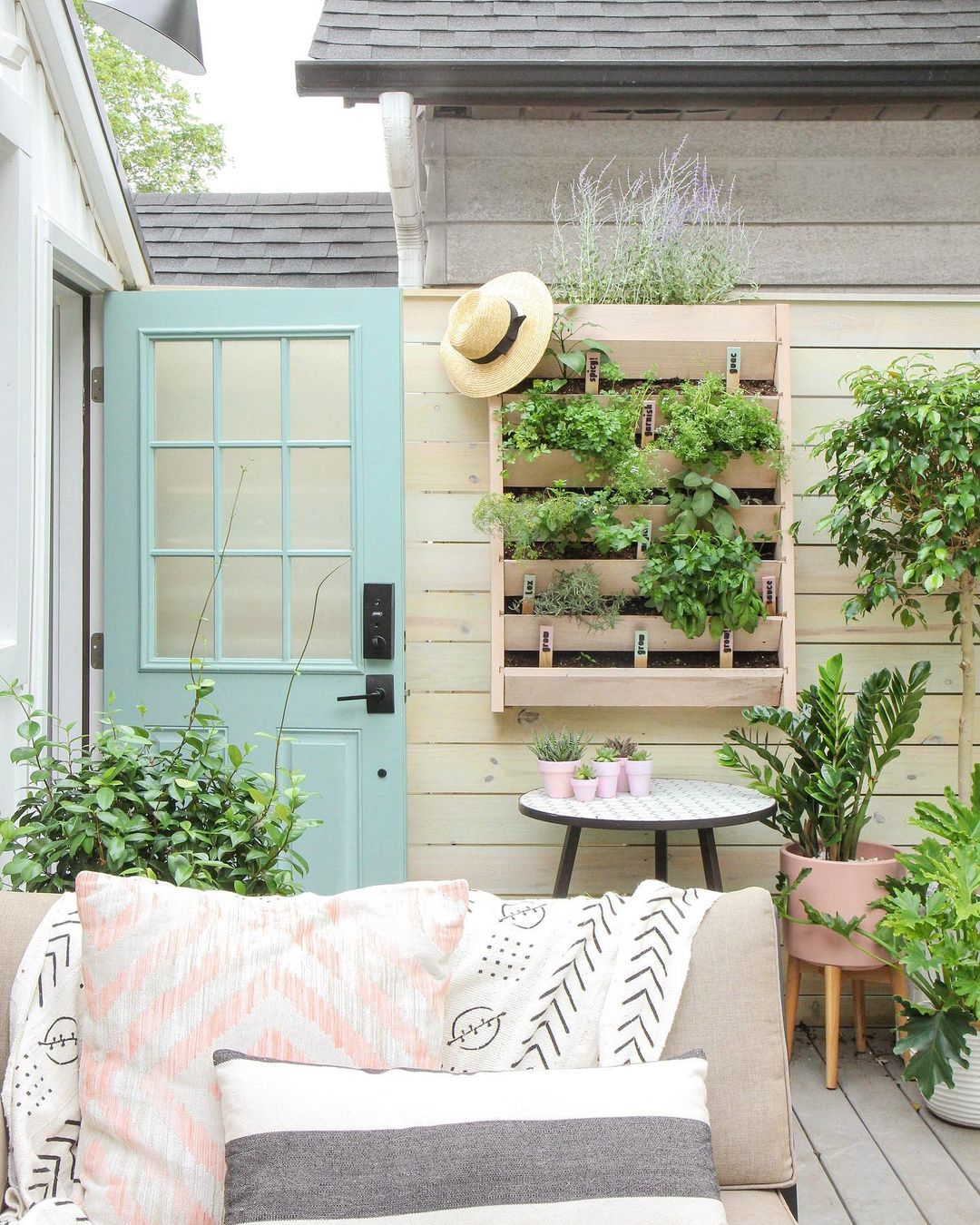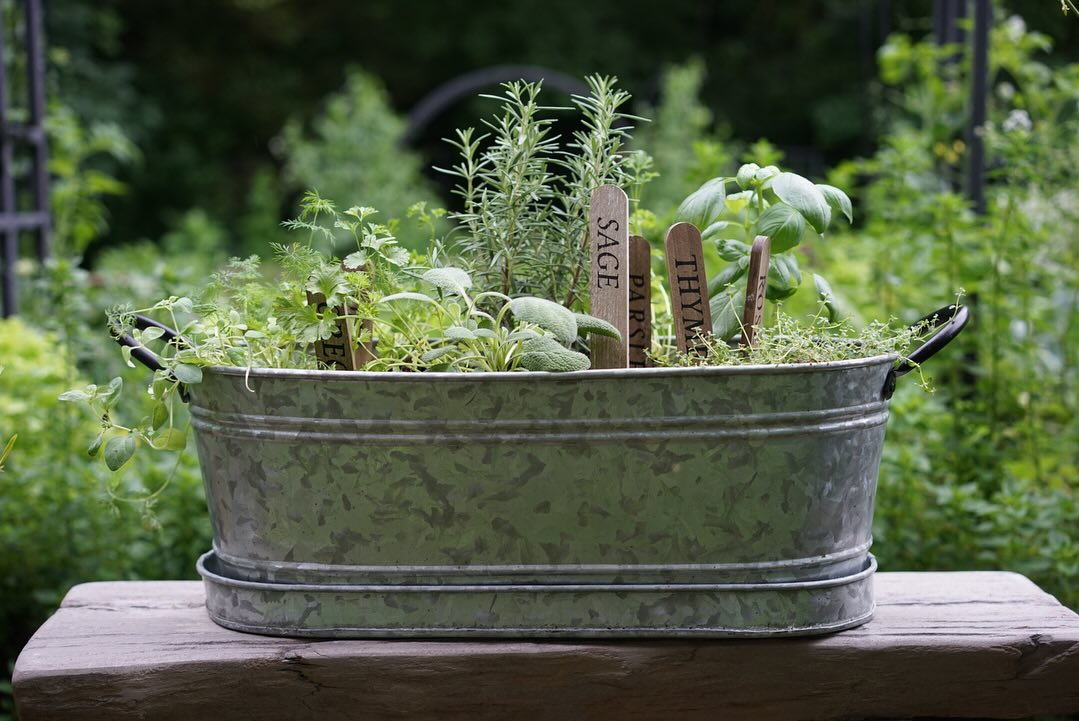Creating a herb garden is a delightful way to enhance your culinary adventures, boost your home’s aesthetic appeal, and contribute to a more sustainable lifestyle. It is known that having a herb garden whether it is indoors or outdoors is really recommended. Anyway, there are some varied ways to have a proper herb garden. But, before we move to the ways and kinds of the herb garden, here are some tips that you should know to get a successful herb garden.

Tips for Successful Herb Gardening
1. Light: Most herbs require at least 6 hours of sunlight daily. Choose the sunniest spot in your home or garden.
2. Soil: Use well-draining soil rich in organic matter. Herbs don’t like to sit in waterlogged soil.
3. Watering: Keep the soil moist but not soggy. Overwatering can lead to root rot.
4. Harvesting: Regularly trim your herbs to encourage bushy growth and prevent flowering, which can alter the flavor.
5. Pests: Keep an eye out for pests like aphids and spider mites. Use natural remedies to keep your herbs healthy.
Now, here are some inspiring ideas to get you started on your herb gardening journey.
Kitchen Countertop Herb Garden
For those with limited space, a countertop herb garden is perfect. Use small pots or repurposed containers to grow herbs like basil, parsley, and chives. Ensure they receive adequate sunlight, and consider placing them near a window. Regularly trim the herbs to encourage growth and maintain a neat appearance.

The herbs are planted in harmonious pots with a sleek and clean look. This kind of character is perfect for the kitchen where everything should be clean to get a healthy kitchen atmosphere. Countertop Herb Garden from @dreamycottagegarden
Vertical Herb Garden
Maximize space by going vertical. Use wall-mounted planters, hanging pots, or even a vertical pallet garden to grow a variety of herbs. This setup is ideal for small balconies or patios. Vertical gardens can be both functional and decorative, turning a plain wall into a vibrant green space.

This one is the wall-mounted rack planter which is made of wood pallet material. Look at how the herbs grow in terraces that make the herbs get a good space to grow. Vertical Herb Garden from @ispydiy
Windowsill Herb Garden
A sunny windowsill is an excellent location for an herb garden. Small pots or long planter boxes can hold herbs like thyme, rosemary, and oregano. Ensure the window gets at least 6 hours of sunlight daily. This setup keeps your herbs within easy reach while cooking.

If you have a window with good sunlight exposure, then this is the best way to grow the herbs. If you can grow it in your kitchen windowsill, then it will be so much better because you can use the herbs right away when you need them in your cooking process. Windowsill Herb Garden from @dtrdng86
Container Herb Garden
Containers are versatile and can be placed anywhere such as on a balcony, porch, or even indoors. Use individual pots or a large container with multiple compartments to grow different herbs together. Ensure proper drainage and use high-quality potting soil for the best results.

This container can be really easy to move. The container is also really aesthetic with its rustic look. You can move it to get the sunlight and then take it inside the house if you want. Container Herb Garden from @gardenaryco
Raised Bed Herb Garden
For those with more space, a raised bed offers better soil control and accessibility. Plant a variety of herbs in sections, ensuring each type has enough room to grow. This method is particularly good for perennial herbs like sage and mint, which can spread if not contained.

This one is really simple as you can make it by using the wood pallet. You can then grow the herbs and install the label. This raised bed herb is the simple example, if you want to have the prettier design, you can add colors. Raised Bed Herb Garden from @justingarciafilms
Spiral Herb Garden
A spiral herb garden is a beautiful and efficient way to use space. Construct a spiral-shaped mound using stones or bricks, and plant herbs along the spiral. This design allows for varying soil moisture levels and sun exposure, catering to different herbs’ needs.

Not only functional, but the spiral herb garden is also really aesthetic. You can even make a fairy garden there since the shape will be really unique and the structure makes it possible for you to build a fairy garden there. Spiral Herb Garden from @rose_wildwood
Indoor Hydroponic Herb Garden
Hydroponic systems are a modern and efficient way to grow herbs indoors without soil. These systems use nutrient-rich water and are perfect for tech-savvy gardeners. They often come with built-in lights, making them ideal for spaces with limited natural sunlight.

The lighting of the hydroponic garden is really adorable. You can even use it as the lighting of your kitchen during the night. The media is clean and sleek that make it great for the indoor herb garden. Hydroponic Herb Garden from @kateandfinn_vs_plants
Hanging Herb Garden
Utilize hanging baskets or macramé plant hangers to create a hanging herb garden. This is a great option for those with limited floor space. Herbs like mint, thyme, and oregano thrive in hanging gardens and can add a lush, green touch to any space.

By using the macrame and jute rope, this hanging herb garden look aesthetic and not boring at all. The jute rope has its own aesthetic side with the rustic impression. Then, the macrame is knitted to get a special pattern and texture. Hanging Herb Garden from @dreamgreendiy
Herb Garden in Recycled Containers
Get creative with recycled containers like old tea tins, mason jars, or wooden crates. These can add a rustic charm to your herb garden. Ensure the containers have drainage holes and place them in a sunny spot.

The cans with their own brands and colors make this herb garden aesthetic. The classic and shabby look of the cans and ladder not make this garden has a low value but even give its interesting impression. Recycled Container Garden from @lifewithoutplastic
Starting a herb garden can be a rewarding experience. Whether you have a sprawling backyard or a tiny apartment, there’s a herb garden idea that will fit your space and lifestyle. Enjoy the process of growing your own fresh, flavorful herbs and enhancing your cooking with homegrown ingredients.




















